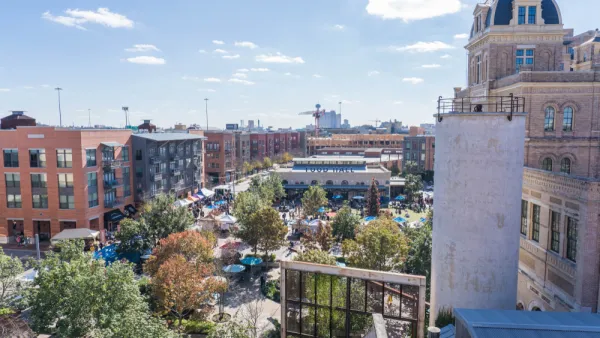The renaissance predicted for urban areas in the United States started strong during the 2010s but slowed in the years leading up to a potentially generation defining pandemic.

New population estimates from the U.S. Census Bureau "show that the nation’s large cities experienced uneven growth trajectories over the last decade," according to an article by William Frey.
"In the last several years, many cities registered growth slowdowns and declines while the rest of the country rebounded from the Great Recession and the population dispersed toward suburbs and smaller areas," according to Frey's summary of the data. "Some cities grew more rapidly than their surrounding suburbs in the early 2010s, but for many, this is no longer the case."
The analysis breaks down by city size, with population figures for cities with more than 1 million residents (10 cities), cities with populations between 500,000 and 1 million (27 cities), and cities with populations between 250,000 and 500,000 (52 cities). Frey also provides analysis of specific cities within that first, largest group, and explains why growth slowed in the nation's largest cities, shifting to suburban locations, in the second half of the decade.
As for what the future holds, Frey offers this speculation:
There are a lot of unknowns, making this difficult to predict. But it is worth noting that big cities registered their highest growth rates during the down economy and deflated housing market in the wake of the Great Recession. Thus, there is a possibility that young adults—both millennials and Gen Z—may again gravitate to big cities as the pandemic recedes and gives way to a recovering economy.
FULL STORY: American cities saw uneven growth last decade, new census data show

National Parks Layoffs Will Cause Communities to Lose Billions
Thousands of essential park workers were laid off this week, just before the busy spring break season.

Retro-silient?: America’s First “Eco-burb,” The Woodlands Turns 50
A master-planned community north of Houston offers lessons on green infrastructure and resilient design, but falls short of its founder’s lofty affordability and walkability goals.

Delivering for America Plan Will Downgrade Mail Service in at Least 49.5 Percent of Zip Codes
Republican and Democrat lawmakers criticize the plan for its disproportionate negative impact on rural communities.

Test News Post 1
This is a summary

Test News Headline 46
Test for the image on the front page.

Balancing Bombs and Butterflies: How the National Guard Protects a Rare Species
The National Guard at Fort Indiantown Gap uses GIS technology and land management strategies to balance military training with conservation efforts, ensuring the survival of the rare eastern regal fritillary butterfly.
Urban Design for Planners 1: Software Tools
This six-course series explores essential urban design concepts using open source software and equips planners with the tools they need to participate fully in the urban design process.
Planning for Universal Design
Learn the tools for implementing Universal Design in planning regulations.
EMC Planning Group, Inc.
Planetizen
Planetizen
Mpact (formerly Rail~Volution)
Great Falls Development Authority, Inc.
HUDs Office of Policy Development and Research
NYU Wagner Graduate School of Public Service





























